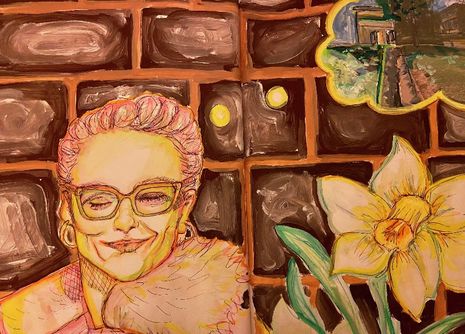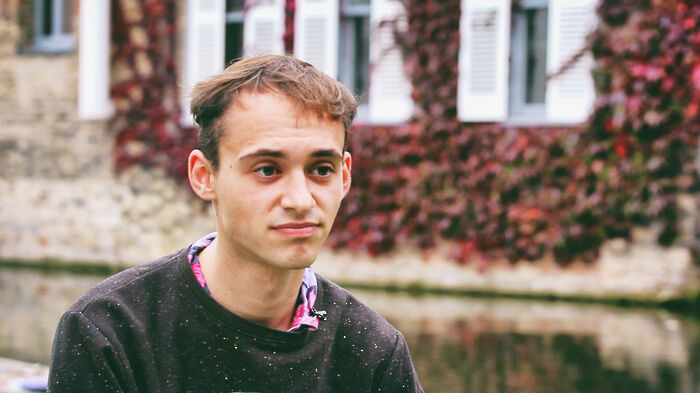ADHD, the Pandemic, and me
After being diagnosed at 21, Lotte Brundle reflects on her experience with ADHD

Have you ever seen the film The Mask? It stars Jim Carrey in a story about an ordinary man who finds a mysterious mask which turns him into a hyperactive caricature of his former self. When wearing the mask, Carrey’s character becomes brighter and faster than before. I ask because, for me, it is a useful metaphor to describe how living with ADHD can feel.
For many years of my life, I’ve thought that the way I think is unique. It’s hard to write that without sounding self-important, but let me explain.
I had been struggling to focus on university work ever since joining in October. When reading, normal words turned wiggly, evolved, and became completely new ones: ‘organism’ became ‘orgasm’, ‘beetle’, became ‘bottle’, and so on and so forth. It made close-reading supervisions remarkably difficult and unexplainably amusing, much to the bewilderment of my classmates. It was my Director of Studies who first suggested I might have an undiagnosed learning difficulty.
Being diagnosed late at the age of 21, over zoom, and during the pandemic, was an unusual experience. It was like something clicked deep inside my brain. An “A-ha!” moment. A “Phew!” moment. But equally, a “What next?” moment. The pandemic is a weird time for anything significant to happen. It’s hard to put into practice all the changes you hope will manage the ‘symptoms’ when there is no opportunity to exercise them in normal life.
When describing how ADHD manifests in me personally, it’s easy to be unconvincing. At times it’s hard to tell where the ADHD ends and traits unique to my personality begin, I guess because it’s an intertwining of the two. ADHD accentuates my natural traits – like Jim Carrey’s character in The Mask.
“Being diagnosed late at the age of 21, over zoom, and during the pandemic, was an unusual experience. It was like something clicked deep inside my brain”
Instead of being a little introspective, I am deeply, almost painfully nostalgic. Instead of being worried, I am at times horror-movie anxious. Instead of being pleased I am frequently abnormally euphoric. This, I later found out, is called emotional dysregulation: a common trait in neurodiverse people. It can lead to experiencing very high ‘highs’ and very low ‘lows’. Emotions can become vivid and tangible. Sometimes, I can almost taste them.
Having ADHD can mean that it’s easy to feel overwhelmed. On my first date, the boy I liked tried to give me a hug. It was too much to process, so I crossed my arms in an X shape in front of my chest. Being oversensitive to stimulation is another way ADHD can manifest itself. When I had my first kiss I laughed and laughed – the intimacy was peculiar to a hysterical extent. It’s a bit like being really, really ticklish. Needless to say, it’s caused problems in my personal life.
I would describe myself as having a very ‘fast’ brain. My mind is often busy with ‘big ideas’, vast unrealistic plans for the future, or deep dissections of vividly relieved moments from the past. It hates living in the present.
“Maybe then, a better way to describe ADHD is simply an exaggerated form of the shared human condition”
Before a diagnosis, it’s easy to question yourself, especially if you have a neurodiverse brain that manifests itself subtly. I read a book that explained it as akin to having a chimp in your brain. Accurate. The speed and velocity of thoughts are sometimes overpowering. I am vividly aware of distractions: the buzz, buzz, buzz of a bee; the drip, drip, drip of a leaky tap; the omnipresent moan of the dishwasher. Time too is an interesting issue. I often feel I’ve wasted it. “The day is gone!” I frequently bemoan at 2pm, if I feel I haven’t yet ‘achieved enough’.
I was offered treatment to suppress these impulses. I can only speak for myself. Medication is great and works wonders for some people with neurodiversity, but I dislike the idea. The ADHD part of my brain is what sparks my creative side. It’s the part that wakes the chimp up at 3am with an all-consuming urge to write a screenplay, paint a picture or organise my sock drawer. Yes, it may also be the driving force behind why I talk too quickly, say things without thinking them through, and blurt out something that, in hindsight, was better left unspoken.
It is a blessing and a curse.
Why was I late? Why am I tired? Why couldn’t I hug my first date back? Why did I thoughtlessly, painfully upset some of my oldest friends? It is hard to explain. And it would be all too easy to fall into the trap of using my ADHD as an excuse. The chimp and I are intertwined, but it’s wrong to point and place the sole blame on him. He’s just a chimp, after all.
ADHD stands for Attention Deficit Hyperactive Disorder, but it is so much more than that. It is a cacophony of quirks, habits and impulses that manifest differently from person to person. I find it curious that some people with neurodiversity are referred to as ‘sufferers’, because I am not ‘disabled’ by my neurodiversity, I feel enabled by it. Enabled to think differently, solve problems with strange new solutions and love passionately and yes – feel anger, sadness, and shame passionately too. Maybe then, a better way to describe ADHD is simply an exaggerated form of the shared human condition.
Now, I wonder whether it’s time to organise my sock draw again? Or write a poem? And, is that a bee buzzing in the distance, or is it just in my head?
 Comment / Plastic pubs: the problem with Cambridge alehouses 5 January 2026
Comment / Plastic pubs: the problem with Cambridge alehouses 5 January 2026 News / Cambridge businesses concerned infrastructure delays will hurt growth5 January 2026
News / Cambridge businesses concerned infrastructure delays will hurt growth5 January 2026 News / New movement ‘Cambridge is Chopped’ launched to fight against hate crime7 January 2026
News / New movement ‘Cambridge is Chopped’ launched to fight against hate crime7 January 2026 News / Uni-linked firms rank among Cambridgeshire’s largest7 January 2026
News / Uni-linked firms rank among Cambridgeshire’s largest7 January 2026 News / AstraZeneca sues for £32 million over faulty construction at Cambridge Campus31 December 2025
News / AstraZeneca sues for £32 million over faulty construction at Cambridge Campus31 December 2025











